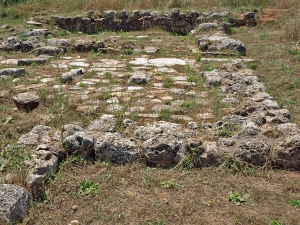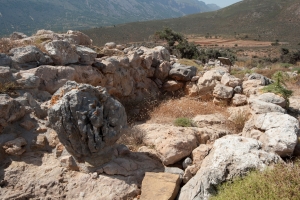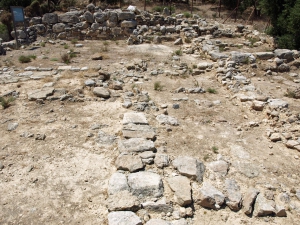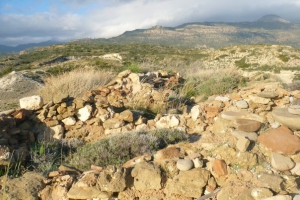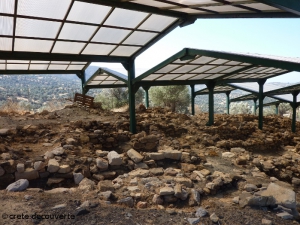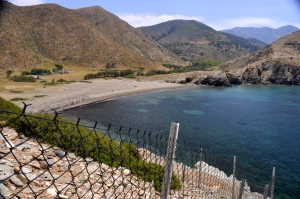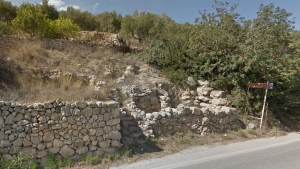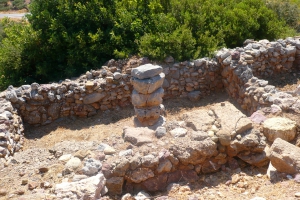The Minoan settlement located near the village of Nerokouros, by Chania, was excavated in 1977. At this point a Minoan mansion was built on palatial standards (tiled floors, polythyron, two floors). The villa was built in about 1600BC.
Chrysokamino is located near the Cave Theriospilios in the area of Kavousi, Ierapetra province. At the site that locals called Golden Oven (chrysokamino), because they frequently found copper pieces, in 1900 the archaeologist H. Boyd spotted a metallurgy workshop that operated from 4500-3500 BC to the Minoan Era. The most important study and excavations since then took place after 1995.
At position Riza, close to Achladia village N. Platon revealed in 1952 a Minoan Rural Mansion (1600-1550BC). The building occupies an area of 270 sqm and consists of 12 apartments with a main entrance on the east, an entrance hall, kitchen, storerooms and (possibly) a stall.
The Minoan settlement at ‘Fournou by in Myrtos is a prime example of an establishment of the first phase of the Minoan civilization, before the construction of palaces. The settlement appears to have been founded before 2500 B.C., and had a violent end before 2100 B.C. It was walled, built on a hill, and contained about a hundred rooms in thick array.
Remains of an extensive centre of the Old Palace period (1950-1700 B.C.) have been uncovered.at the site called Gournes, near the village of Apodoulou, at the west foot of Psiloritis. The site dominates the Amari valley and controls the main route to the Messara plain.
At the eastern edge of Pera Galini beach, the small cape of Kefali is formed. The ruins of a Minoan settlement, which is thought to have been an important port in the region, have been discovered there.
At the road connecting Piskokefalo and Sitia we meet the remains of an excavated two-storey Minoan mansion. We can still discern the remnants of rooms, stairs and the protective boulders coming from the neighbouring river of Pantelopotamos or the sea.
The Minoan villa of Zakros was discovered in 1965 by N. Platon and I. Sakellarakis. It was a rural villa with complete facilities for wine production, very similar to modern ones, and big jars for storing wine. The wine press is exhibited in the Archaeological Museum of Sitia.











